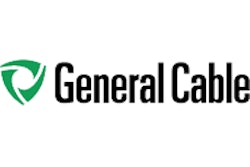This is the fifth article in the series, What is your competitive edge? No, really! What is your competitive edge? To read the forth article, 1+1 = 4 (Team selling is the answer), please click here.
What is your competitive edge? No, really! What is your competitive edge?
Sounds like a simple question, and when asked, most answer pretty quickly and predictably. Most companies believe their competitive when compared to their competitors is typically the same.
If it is your goal to excel in a competitive market, continuous attention to systems, methods, and processes that offer a true competitive edge is essential. These methods and processes must be things you and your team can focus on and control internally. External factors such as economy, industry softness and such are uncontrollable and are therefore not part of this conversation.
The Competitive Edge topic this month is KPI’s for ROI’s: Sales focused KPI’s.
First off, what are KPI’s? Key Performance Indicators. This has been a hot buzz around the industry lately. Everyone is trying to get their arms around the KPI’s in their business. What I am going to talk about today is what I call the Sales Focused KPI’s. These are the KPI’s I find most companies I work with are not focusing on.
I am sure you have heard this many times “sales is a numbers game”. Think of sales focused KPI’s as the leading KEY indicators that can give you a window into what the future sales numbers will look like. If you want to effectively manage your sales team and help them grow the business, increase revenue and have a competitive edge over their competitors you need to determine the KPI numbers that will help your team and allow you too quickly and easily know how they are doing. I think of Sales KPI’s as a scorecard.
The title of this article is called “KPI’s for ROI: Sales focused KPI’s” the key word here is “Sales”. What I find is most companies are focused on what I call Back-End focused KPI’s. Let’s do a quick dive into this. Back-End focused KPI’s are looking at the numbers that are around the order and invoicing side of the business. Here are some examples of Back-End focused KPI’s:
- Average days payable
- Inventory turns
- Booking this month
- Invoicing this month
When the controller at your company says our average days payable has been around 50 days you know instantly whether that is good or bad. You have set sales goals and when it is said our bookings this past month was $1,500,000 you know whether this is good or bad. These are typically the types of KPI’s that are being used inside companies today. They have become culture within your company and are known and easily graded good or bad by everyone on the team.
So what are some Sales focused KPI’s that you could make part of the company culture. I have broken these down to the ones I believe are easily managed and can provide a “Leading Indicator” to future sales.
Sales Focused KPI’s:
- Number of Sales Visits
- Number of new Leads
- Number of new Qualified Opportunities
- Number of new Quotes
- Open Quote $ (pipeline)
- Overdue Quotes
Let’s go thru an exercise that you could do to establish some Sales KPI’s in your company.
You must start with calculating the Load Input you are focused on for the Sales KPI’s. Here is the formula for calculating this along with an example.
You can use the formula (Sales Goal = Base Business + (New Load Input) * Hit Rate) for the company, each sales person, branch, product, industry, etc.
In this example we have come up with the New Input Load we need each month to reach our Sales Goal is $2,857,143. Now that we have this number we can determine the Sales KPI’s.
If we believe in the process of:
Sales Visits > Opportunities > Quotes > Orders
Let set the KPI’s for each. The shaded areas are the inputs.
This KPI Sales Calculator can be downloaded at www.salesprocess360.com under the media center “seminar takeaways”.
In this example your KPI’s are:
- 48 Sales Visits
- 24 Qualified Opportunities
- 8 Quotes
- $238,095 Quote dollars
There are other sales focused KPI’s out there, but what I have found is keeping your eyes on these is where the ROI is and is simple and easy for your team to understand. As I stated earlier I call these your “Leading Indicators” use this formula and have your sales team create their own KPI’s. After they have established their KPI’s but in place a system to monitor the performance. Create a simple scorecard to track these KPI’s. I am a big believer of “insight in mind, out of sight out of mind” I know I have given you a lot of examples in the article, but here is one more.
Here is a simple Scorecard using Excel to track and monitor some of these KPI’s against Load Input Goals.
So a competitive edge for your team could be to put focus on Sales KPI’s. Keep it simple with a way to measure and easily monitor the KPI’s that can bring you ROI. Calculate your Load Input Goals and back fill to establish the number of Sales Visits, Leads, Opportunities, and Quotes your team needs to identify ever month. Look at this as your “Leading Indicator” for future business.
The Takeaway: Go through the process described above with your sales team. Get them involved so they understand the value and reward of establishing, measuring and monitoring these KPI’s. Create a simple KPI Scorecard and share with the team every month. This could give your team a competitive edge.
Be on the lookout for next month’s competitive edge article: CRM is not a 4 letter word. Where is the ROI?
Brian Gardner, Founder and Lead Evangelist at SalesProcess360.
Brian Gardner is the Founder of SalesProcess360, a coaching, consulting, and speaking company focused on helping industrial sales companies gain a competitive edge. Gardner has been involved in industrial sales for over 30 years. In fact: he was born into it. His father owned an industrial sales rep/distributor company serving the Gulf Coast in the chemical, refinery, and oil & gas industries, and after a brief stint at Texas Instruments, Gardner returned to the family business in inside sales. After 15 years of working through the ranks, Gardner served as VP of Sales until 1999, when he co-founded an industrial sales focused CRM software company called Selltis. Gardner recently started SalesProcess360 to take his passion for sales process improvements to the industrial sales world. To learn more, or to contact Gardner, please visit www.salesprocess360.com.























